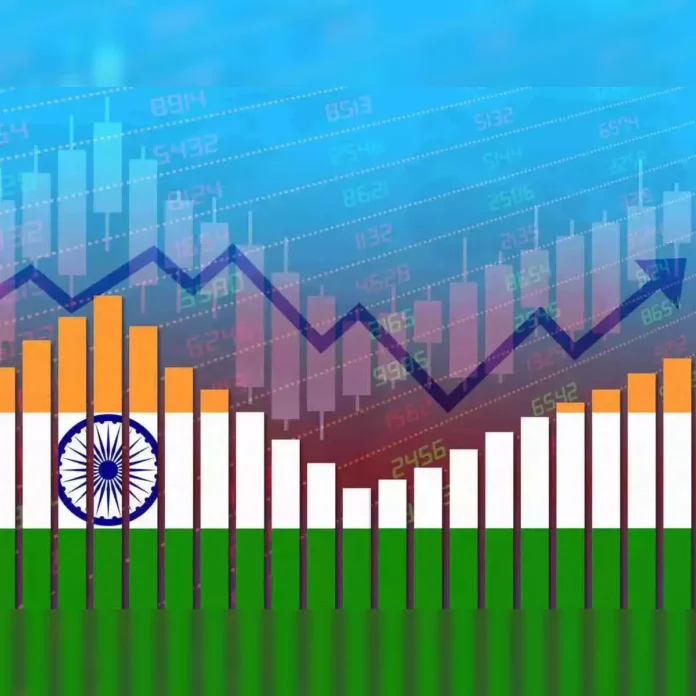India’s economic evolution is a testament to resilience amidst diversity
Since gaining independence in 1947, India has steadfastly adhered to the principles of democracy, ensuring political stability and continuity even in the face of formidable challenges

Manoj Kumar Pathak
In the ever-evolving tapestry of global economics, India’s narrative emerges as a distinctive thread, weaving through the complexities of democracy, privatization, and globalization. While the Global South often grapples with the repercussions of economic reforms, India stands out as a rare exception. This article aims to delve deeper into India’s economic journey, exploring the symbiotic relationship between its democratic ethos and its embrace of privatization and globalization, which has propelled it to the forefront of the global economic landscape
India’s Economic Landscape:
India’s economic evolution is a testament to resilience amidst diversity. With a population exceeding 1.3 billion and a myriad of cultural, linguistic, and socioeconomic diversities, India’s economic trajectory is as intricate as it is formidable. Yet, amidst this complexity, India has managed to carve a niche for itself as one of the fastest-growing major economies globally. Despite occasional hiccups, the country has largely sidestepped the economic crises that have plagued many of its peers in the Global South.
The Role of Indian Democracy:
Central to India’s economic journey is its robust democratic framework, which forms the bedrock of its governance structure. Since gaining independence in 1947, India has steadfastly adhered to the principles of democracy, ensuring political stability and continuity even in the face of formidable challenges. The democratic ethos, enshrined in the Constitution, has provided a fertile ground for economic reforms and inclusive growth.
India’s democratic experiment is a remarkable tale of resilience and adaptability. Despite facing daunting odds – from widespread poverty and illiteracy to ethnic and religious diversity – India’s democratic institutions have weathered the storms, emerging stronger and more resilient. Free and fair elections, a vibrant media landscape, an independent judiciary, and a robust civil society have collectively nurtured an environment conducive to economic progress.
Privatization:
The winds of economic change swept across India in the early 1990s, heralding a new era of liberalization, privatization, and globalization. Faced with a looming balance of payments crisis, the Indian government under Prime Minister Narasimha Rao initiated sweeping reforms aimed at dismantling the bureaucratic shackles that stifled economic growth. The dismantling of the License Raj, which had long stifled entrepreneurship and innovation, paved the way for private enterprise to flourish.
Privatization, a cornerstone of India’s economic reforms, sought to reduce the government’s intervention in key sectors of the economy. State-owned enterprises, once synonymous with inefficiency and bureaucratic inertia, were gradually opened up to private investment and competition. The telecommunications, aviation, and banking sectors witnessed a wave of privatization, leading to increased efficiency, innovation, and consumer choice.
Globalization:
India’s embrace of globalization has been both a catalyst for change and a source of opportunity. As barriers to trade and investment fell, India’s integration into the global economy deepened, unleashing a wave of transformative change. The Information Technology (IT) revolution, epitomized by the rise of Indian software services firms, exemplifies the transformative power of globalization. Indian IT firms, armed with talent, technology, and ambition, capitalized on the growing demand for outsourcing services, catapulting India onto the global stage as a leading provider of IT services.
Globalization has also facilitated the flow of capital, technology, and ideas, fostering innovation and entrepreneurship. Foreign Direct Investment (FDI) inflows surged as multinational corporations sought to tap into India’s vast market potential. Additionally, the liberalization of trade policies opened up new avenues for export-led growth, with sectors such as pharmaceuticals, textiles, and automotive emerging as key drivers of India’s export boom.
Challenges and Opportunities Ahead:
While India’s economic journey has been marked by remarkable progress, it is not without its share of challenges. Income inequality remains a pressing concern, with disparities between urban and rural areas, and among different socioeconomic groups, persisting. Moreover, India’s infrastructure deficit, characterized by inadequate transportation networks, power shortages, and urban congestion, poses a formidable impediment to sustained economic growth.
Bureaucratic red tape and regulatory hurdles continue to hinder the ease of doing business in India, deterring both domestic and foreign investors. The legacy of environmental degradation, exacerbated by rapid industrialization and urbanization, demands urgent attention. Climate change, resource depletion, and pollution pose existential threats that cannot be ignored.
However, amidst these challenges lie immense opportunities for India to unlock its full economic potential. The demographic dividend, with a youthful population poised to enter the workforce, presents a golden opportunity for India to harness its demographic dividend through investments in education, skill development, and job creation.
India’s burgeoning middle class, with its increasing purchasing power and consumption patterns, offers a vast market for domestic and foreign businesses alike. The digital revolution, fueled by widespread internet penetration and mobile connectivity, holds the promise of transforming India’s economy and society.
India’s economic trajectory is a testament to the transformative power of democracy, privatization, and globalization. From the shackles of a planned economy to the dynamism of a market-driven economy, India’s journey has been remarkable, albeit fraught with challenges. As India continues on its path of economic growth and development, the lessons gleaned from its experience hold valuable insights for other nations in the Global South.
The convergence of democracy, privatization, and globalization has catalyzed India’s economic rise, propelling it towards becoming a key driver of global growth. Yet, the journey is far from over. As India navigates the complexities of a rapidly evolving global economy, it must remain steadfast in its commitment to inclusive and sustainable growth. By harnessing the power of democracy, leveraging the potential of privatization, and embracing the opportunities of globalization, India can realize its vision of becoming a prosperous and equitable society, standing tall as a beacon of hope and inspiration for the world.


